I’ve had a strange problem this year with sourcing chiles with consistent heat. Sometimes they’re fiery, other times they’re meh. There are also times when the chiles –- jalapenos and Fresnos, taste like regular bell peppers. Thai chiles –-homegrown and purchase from farmers’ markets, may excite the palate or fall flat. Serranos are consistently hot but can be one-note if that’s all you use. I deploy chiles in stir-fries, tuck them into banh mi, and drop them into hot bowls of pho noodle soup. They go into salsas, guacamole and other non-Asian dishes that we regularly eat. You expect some fruity heat but when there’s none, it can rob a dish of an element of surprise.
My interest in chiles isn’t because I’m a chile head who seeks to set my insides on fire. What I aim for is a note of fire with fragrant fruitiness. Chile heat for the sake of pure heat obliterates my senses and I can’t enjoy other elements in a dish. Vietnamese food often benefits from a moderate amount of heat. Thai food is about balancing heat with other elements too. A nice chile takes your senses close or to the edge, then lets things come back to normality.
September is when lots of chiles show up at the farmers’ market and ripen in people's yards. Let’s share our chile experiences and tips so we may learn from one another.
I often use Fresno chiles because their moderate heat is close to the long chiles of Southeast Asia. They remind me of the yellow, orange chiles in Vietnam. They also have a balanced fruity-heat whereas jalapeno tends to have more heat than fruitiness. Many months of the year, I buy Fresnos from grocers, but when they’re in season locally, I get them from a farm called Borba Farms, which specializes in chiles. Borba had grown consistently good Fresnos in the past but this year was weird.
Hot weather is suppose to bring on the chile heat but in 2015, Borba had hotter Fresno chiles in June and July than it did in August and September. I was so frustrated because I’d make test batches of pho, sit down to try them out with simple garnishes (chile and herbs). There was either a wow or blah experience. I learned to keep the chile effect as a side experience to the pho tastings. Last weekend, I asked the farmer what was the deal.
“It’s our location, where we are,” he initially said, blaming it on our cool coastal climate. After I confronted him with the fact that he’d sold me hot chiles in the past, he revealed this: The seeds had changed. The seeds that the farm used in the past suddenly could not be found. What they were forced to grow and sell looked beautiful but had little heat. He pointed to the orange-red Fresno (in the center, below) and told me to buy that one. That it was hot one. The deep-hued Fresnos were beautiful but had mild heat.
“I know what you mean. They are different,” he confessed. “We are saving seeds from the good ones so we can grow them next year.”
That would explain the difference in the chile sauces that I made with Borba’s Fresnos.
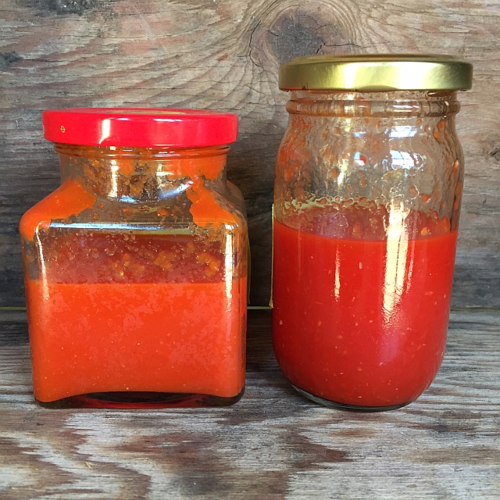
This time of year, red jalapenos arrive at the markets too. I purchased these from Whole Foods. They’re locally grown by Coke Farm in San Juan Bautista, a pretty hot place located a good hour inland from the coast. The stems look tired, so I gather they’d been on the plant for a long time. Nevertheless, when cut open, you could smell their heat. The fleshy peppers yielded a thick chile sauce.
Even with Coke Farm’s ripe, red jalapenos, there was one that was just so-so. Here is a bland Fresno and one of the red jalapenos. The bit of green inside the jalapeno was unusual, and when I tasted the pepper (I put my tongue up against the fleshy part), it was surprisingly mild.
I’m not sure what kind the Cokes had farmed. There’s a lot of variation with the same seeds grown on the same farm. If you’re into growing your own, one local farm prefers El Jefe jalapeno, which I can attest to its heat even in its green state.
In the late 1990s, I began growing Thai Dragons, a lovely Southeast Asian chile that produced a bounty of gorgeous, consistently hot-fruity peppers. Then the starters disappeared from the nurseries. I asked local nurseries for it and came up with nothing until last year, when I was able to buy a 6-pack. Two of the plants refused to die last winter (a circumstance of the drought and warm climate, I think). One finally pooped out this summer after producing a few scrawny chiles. But the bigger plant charged ahead, as you can see:
What’s weird is that the scrawny chiles from the little plant that died has more pep than the ones from the larger plant that’s bushy and beautiful. They had the same growing conditions, were of the same type of chile plant, but had different outcomes.
South West chiles (kin to Hatch chiles) are also at our local markets. I bought a couple of red ones last week that were marked “hot” by the farmer. We roasted them on the grill, peeled them and what did we find? Sweet flesh.
I’ve asked my favorite Hmong farmer, Tra Her, about chile heat. She’s told me that it varies. Sometimes the chile is hotter before it reaches full maturity. Her husband added that that’s why you just have to keep eating more of them. I think that’s the best advice.
What have your experiences been with growing, buying or using hot chiles?
Related links and posts:
- If you’re into chile pepper plants, check thechileman.org
- For seeds, try seed suppliers such as: Johnny’s Seeds, Evergreen Asian Seeds, Kitazawa Seeds













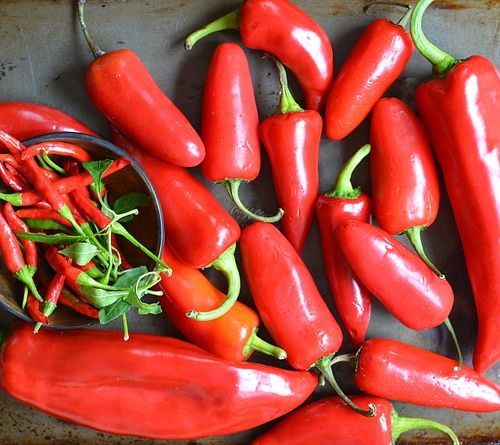
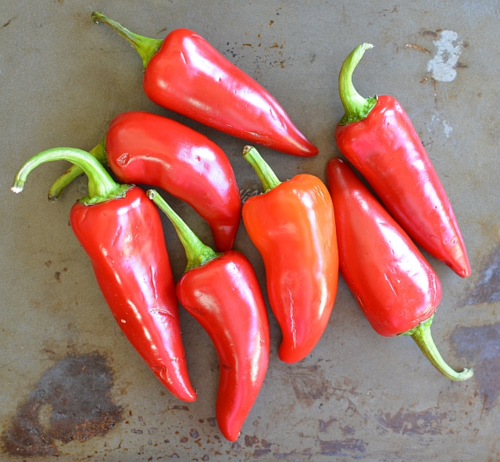
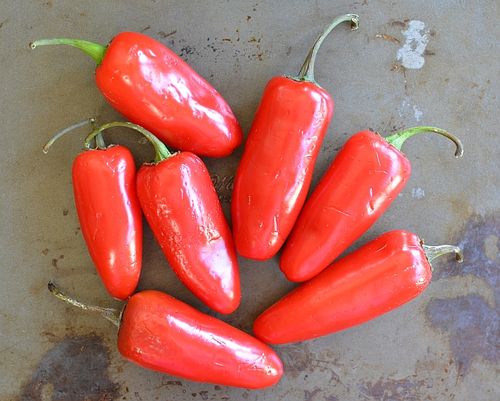
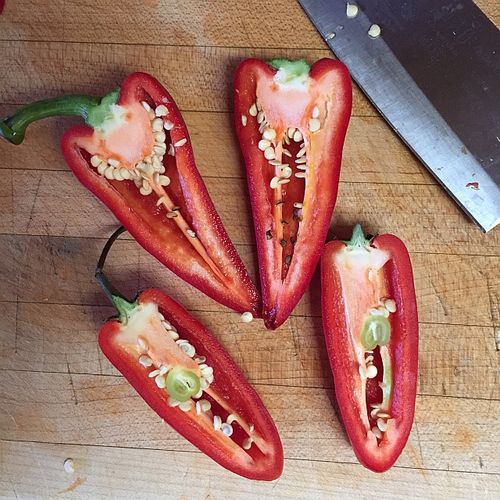
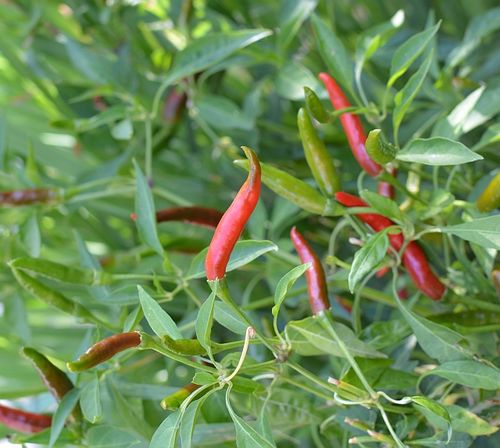
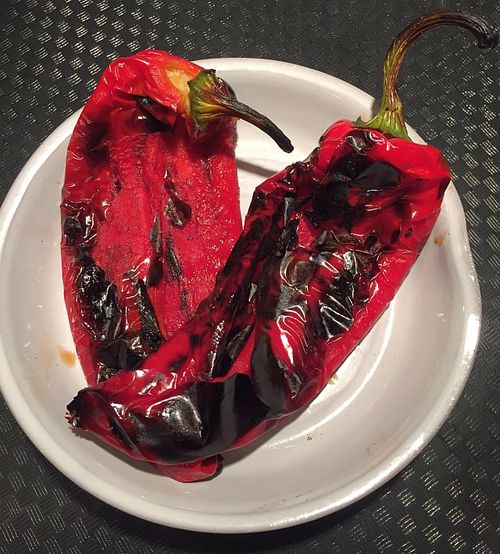

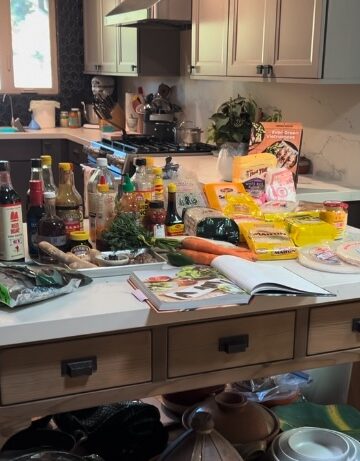
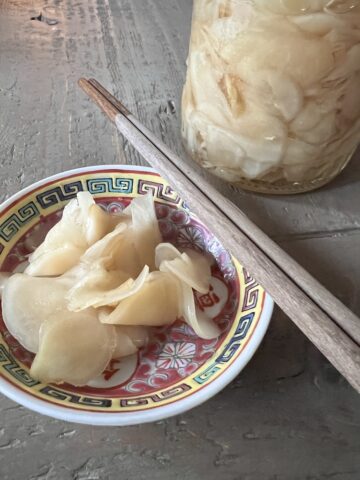
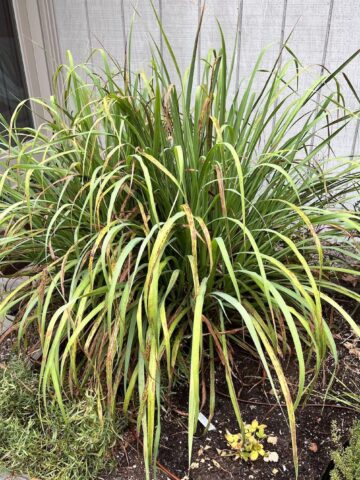
Shaylee Packer says
You mentioned that with the fresno chilies, the lighter of the bunch would pack the most heat. Is this the case with all types of peppers such as, hatch chilies? My husband likes spicy foods, and there are times when the pepper doesn't quite pack the punch that he wants. I will have to share this tip with him, and see if it helps the spice.
Andrea Nguyen says
When I buy Hatch chiles or a variety of them from our local farmers, I ask them to tell me about the heat level. They know how things change during the growing and harvesting season.